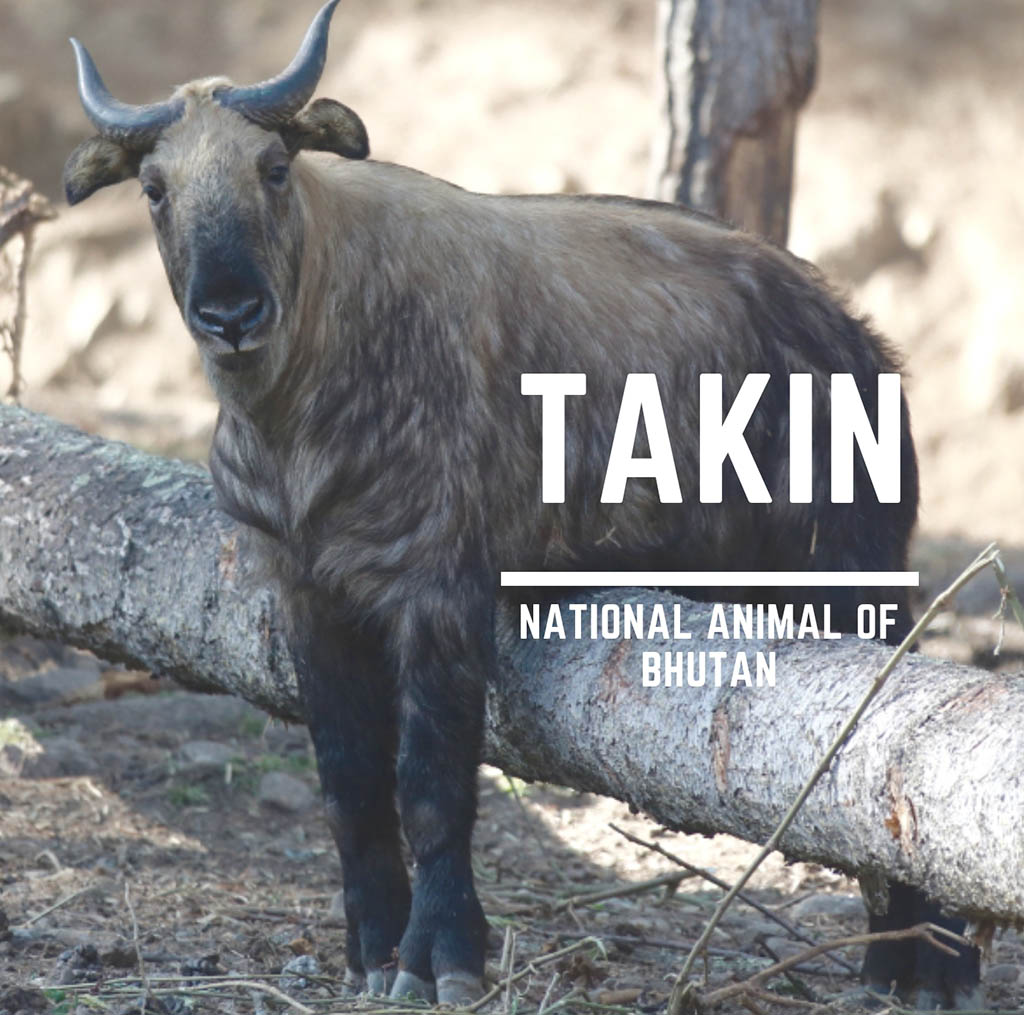
Animals chosen as national symbols are majestic, if not mythical, which is why the Bhutan Takin, a hairy herbivore with two-toed hooves that traverses the eastern Himalayas, is revered as the national animal of Bhutan.
The Takin is a symbolic animal representing some aspect of Bhutan’s culture and tradition, much like the national animal of any other country. The national animal of Bhutan depicts the unique identity of Bhutan.
The Bhutan Takin was identified as the country’s official emblem in 1985 and is protected under Schedule I of Bhutan’s Forests and Nature Conservation Act of 1995.
Why exactly did Bhutan pick the Takin as its national symbol? To prevent trophy hunting? Illegal hunting was definitely a significant factor, but the real reason for the Bhutanese dates back to the 16th century.
Unlock the secrets of this mystical creature in Bhutan by contacting Norbu Bhutan for a once in a life time adventure!
The Mythical Origin Of The Takin
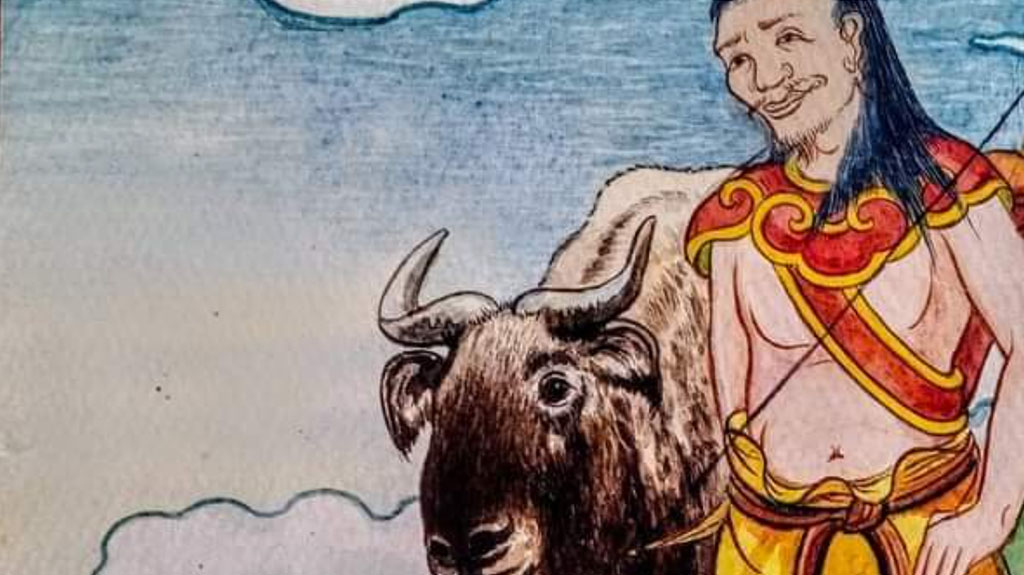
The Takin, scientifically known as Budorcas Taxicolor, has a fascinating origin story that contributed to its high religious significance and was subsequently adopted as the national animal of Bhutan.
Stories are told that Lam Drukpa Kunley, a master of spiritual significance, arrived in Bhutan from Tibet in the 15th century to preach religious teachings.
The Bhutanese people approached the then ruler of an upland district in Bhutan and asked him to command the priest to evoke a miracle. He agreed on the condition that he would be fed a whole cow and a whole goat for a meal.
The people did as he said, bringing him a goat and a cow to devour. The Tibetan saint ate the meat of both animals but left the bones behind.
Then, with a flick of his fingers, he slipped the decapitated goat’s head onto the cow’s body and recited a mantra. The animal immediately came to life. He used his magical prowess to bring a new critter to life, which he named the “Dong Gyem Tsey” – Takin.
What Are The Physical Features Of The National Animal of Bhutan ?
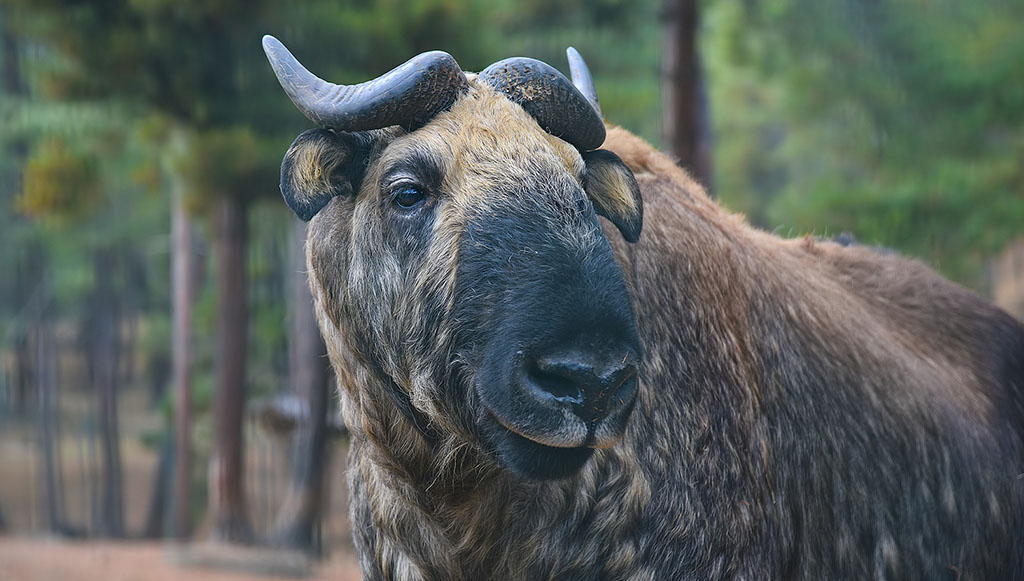
A naturalist who was the first to identify the Takin for Western science never saw one alive. Local hunters brought a takin hide to him in Nepal in the mid-nineteenth century, describing and illustrating the animal for him.
Without a living Takin to observe its behavior, experts were stumped as to what species the creature belonged to. Did it belong to the antelope or wild ox family?
Budorcas taxicolor, which means “oxlike gazelle, badger-colored,” reflects this ambiguity in its scientific name. The mystery is still unsolved!
However, the national animal of Bhutan is widely considered to be the biggest subspecies of the Caprini. It has a stocky build with a large chest. The tall, arched nose and sturdy horns with sharp pointers at the base distinguish its enormous head.
Both sexes have horns that rise backward to a sharp tip; they are about 12 inches long but can grow up to 25 inches long.
It has a long, thick, and scruffy coat with dark stripes running down the back, and males (bulls) have dark features.
Is There A Festival For The National Animal Of Bhutan?
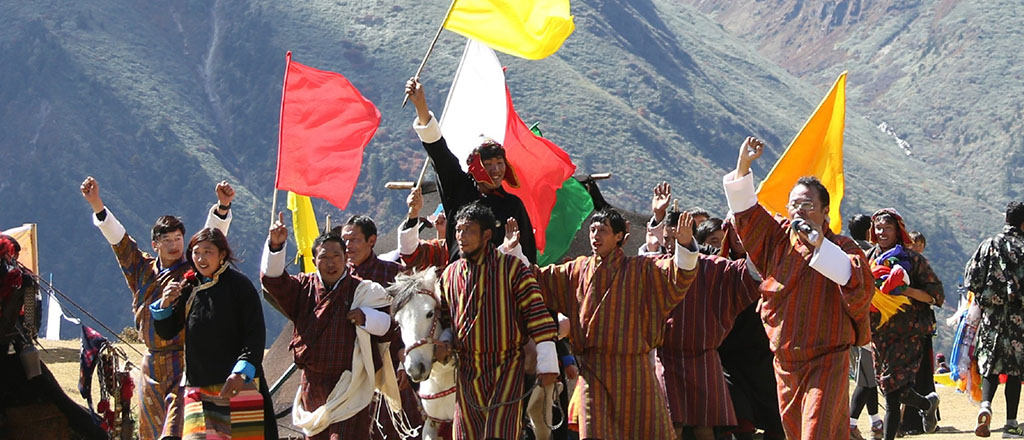
Yes, there is a Takin festival in Bhutan. The Takin Festival is a once-in-a-lifetime opportunity to see the national animal of Bhutan up close in their natural summer grazing pastures.
Despite being a globally endangered and protected species, Bhutan has a growing population of this magnificent creature. You surely won’t want to miss out on this opportunity to see and appreciate their extraordinary body.
The festival is held in Gasa Dzongkhag, which is a part of Jigme Dorji National Park, Bhutan’s second-largest national park. The park includes locations with a diverse range of temperate wildlife and herbal plants.
During the festival, you’ll be able to take part in some of Bhutan’s best trekking routes, relax in therapeutic mineral hot springs, and shop for souvenirs exquisitely found in Bhutan, which make excellent keepsakes to mark your trip to Bhutan.
Why Is The National Animal Of Bhutan Endangered?
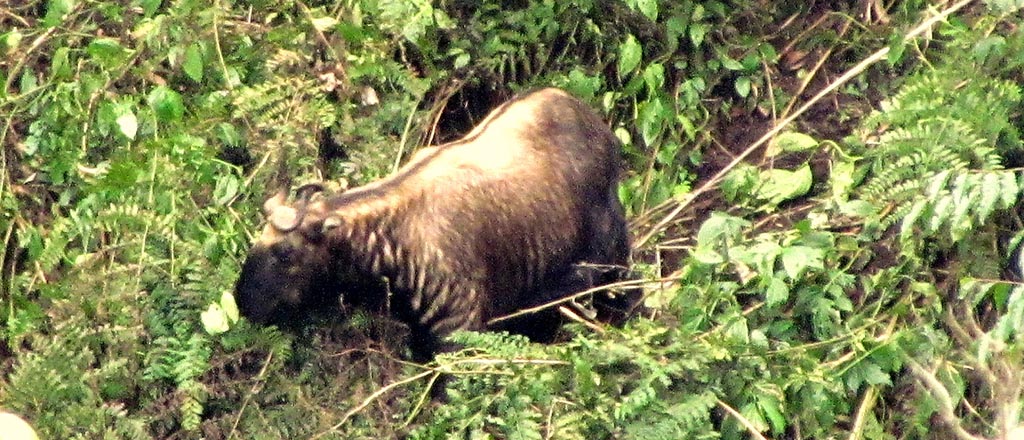
The International Union for Conservation of Nature (IUCN) Red List classifies the Takin as endangered, and it is listed as a threatened species in China. The national animal of Bhutan is on the verge of extinction owing to hunting, poaching, and habitat destruction.
Moreover, the Takin’s meat is considered delectable by Bhutanese people; thus, they hunt them. Apart from the natives, Takin is hunted and kept as pets.
The fact is that Bhutanese people adore Takin as pets and food supplements; thus, it’s simple to see why the Takin is regarded as the national animal of Bhutan.
Where Can You Spot The National Animal Of Bhutan?
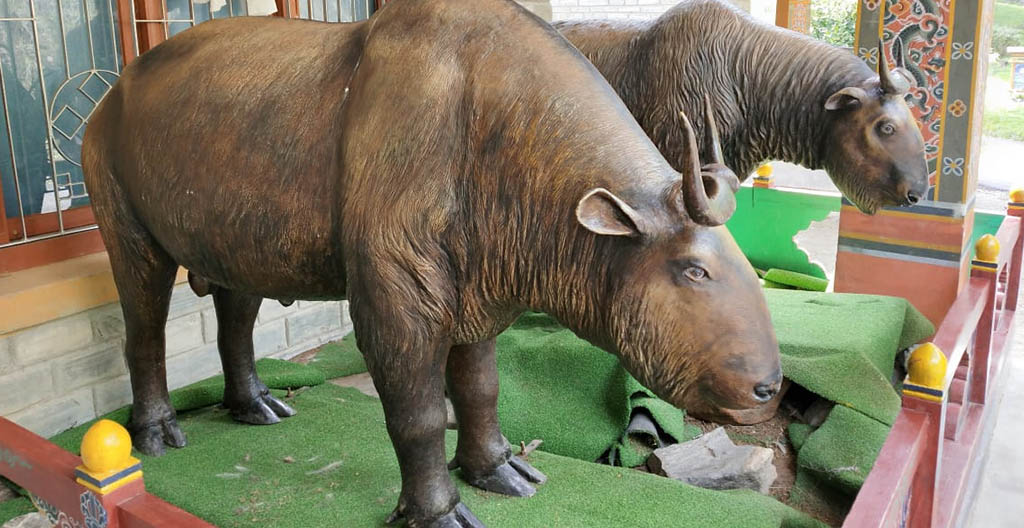
The Jigme Dorji National Park and other northern parts of Bhutan are home to more than 1,000 Takin.
The national animal of Bhutan is a sure-footed animal seen during the summer months in Tsarijathang between Laya and Lingshi and in Tarina valley in Lunana.
They descend to sub-alpine forests and grasslands above 3700 m to avoid leeches, mosquitoes, horseflies, and other blood-thirsty parasites of the monsoon in the lower valleys.
While most Takins dwell at high elevations, some of them are found in Bhutan’s capital city of Thimphu’s zoo.
How Many Types Of Takin Are There?
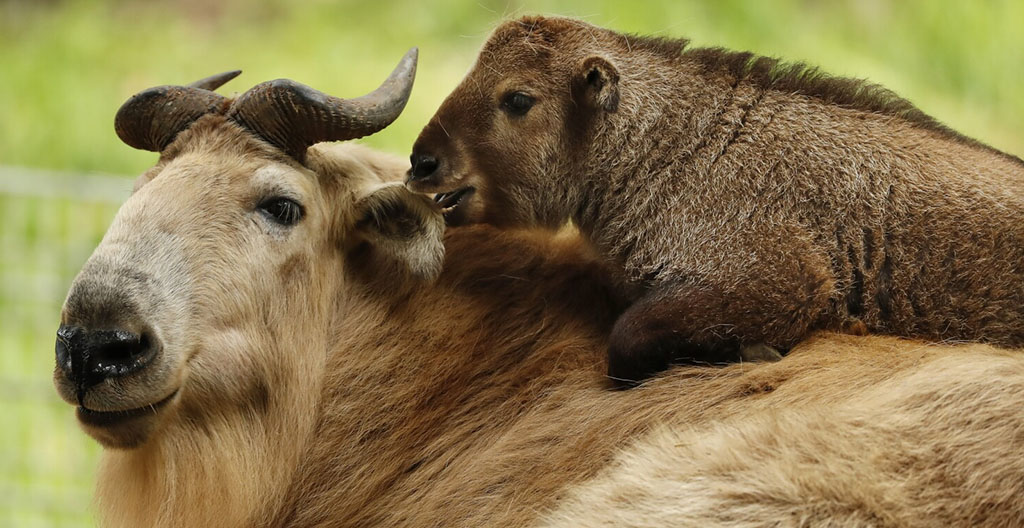
The national animal of Bhutan has four other subspecies: Golden Takin, Mishmi Takin, Sichuan Takin, and Bhutan Takin. They differ in coat color, with male Takins having darker faces than female Takins, making it easier to differentiate between them.
The national animal of Bhutan prefers to live in small groups; nevertheless, adult males prefer to live alone for the rest of their lives.
How The Takin Preys — And Hides
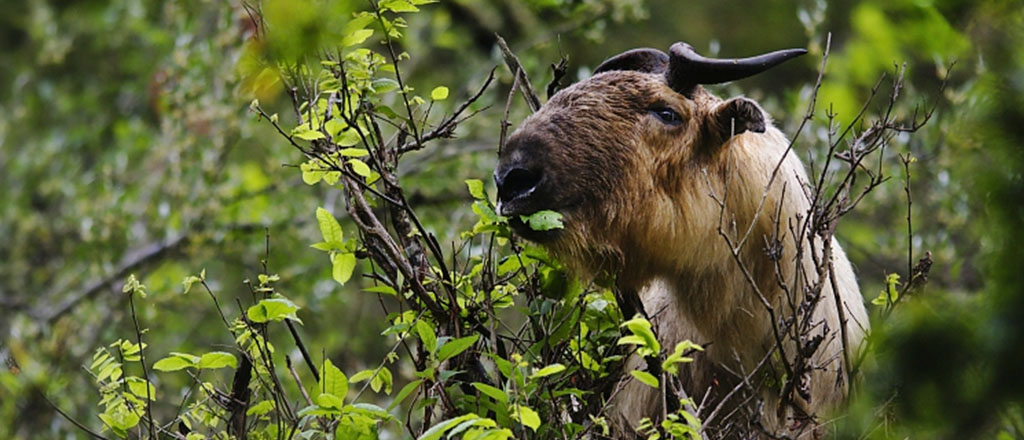
Despite its size, the endangered national animal of Bhutan has some apex predators. However, Takins have successfully honed their ability to blend in with the shrubby slopes to escape. It also uses a low sniffle to alert its herd members of impending danger.
After hearing the alarming sound, the entire herd will flee and find cover in dense vegetation, mainly bamboo thickets and other tall grasses.
The national animal of Bhutan in captivity, on the other hand, communicates with each other by making various noises like burps and gurgles with their huge nostrils.
Like other species of the Bovidae family, the elusive takin is a nocturnal herbivore, feeding mainly between daybreak and twilight.
The national animal of Bhutan is a herbivore, meaning they only feed on plants, such as bamboo shoots, flowers, and leaves. Takins consume a wide range of plants, up to 65 distinct species in total.
Salt licks, also known as mineral licks, are an important diet for Takins. The salt and mineral licks are vital to the takin’s nutrition, and as a result, its migration patterns are influenced by where these minerals are found.
These minerals enable them to break down any harmful build-ups in their system caused by the flora they consume.
Can Tourists Visiting Bhutan See Takin?
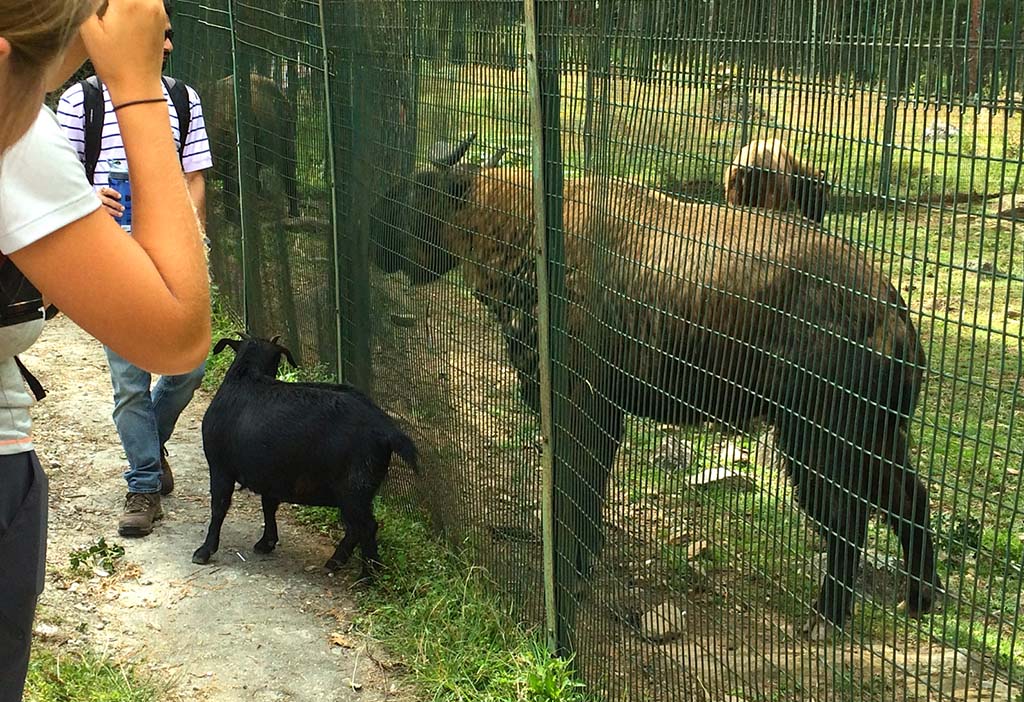
Yes, without a doubt! Visitors can always consult their tour operator to customize a tour to appreciate the national animal of Bhutan in the Takin wildlife park, which is located in Thimphu, the capital city.
Norbu Bhutan Travel Pvt. Ltd (NBT), one of Bhutan’s leading tour operators, offers a unique and personalized experience to every visitor who visits the nation – thanks to a well-trained and highly motivated team of professionals.
NBT allows you to immerse in Bhutan’s unique insights, valleys, and various other cultural idiosyncrasies.
Whether you have a bucket list to tick off, such as visiting the Takin wildlife park in Thimphu or conquering the most arduous trek in Bhutan, Norbu Bhutan is your go-to travel operator to make your Bhutan trip an unforgettable one!
Bhutan is currently focused on preserving the natural habitat of Takins and other endangered animals and birds such as Tigers, Black-necked Cranes, and more to prevent them from extinction.
If you’re considering a vacation to Bhutan, don’t miss out on the once-in-a-lifetime opportunity to witness the national animal of Bhutan that are hard to find elsewhere.
Are you interested to learn more about the symbolic emblems of Bhutan? Consider reading our blog on Why Is Archery The National Sport Of Bhutan?


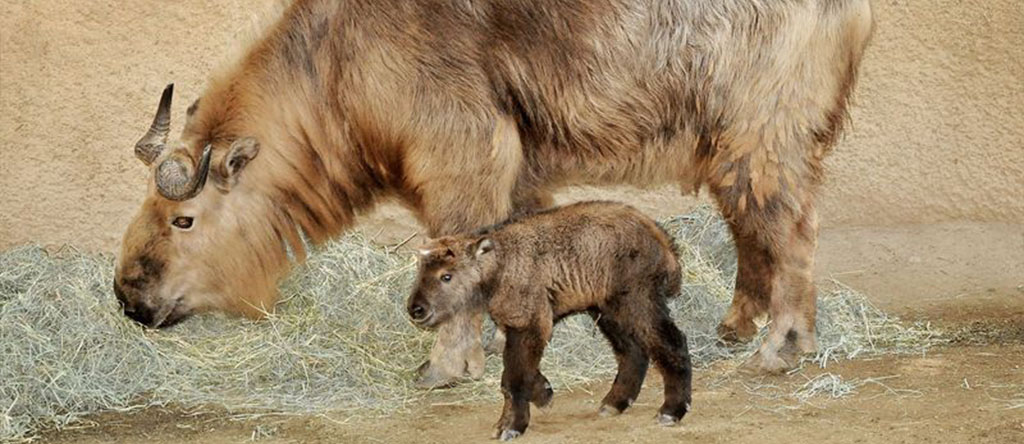
No responses yet